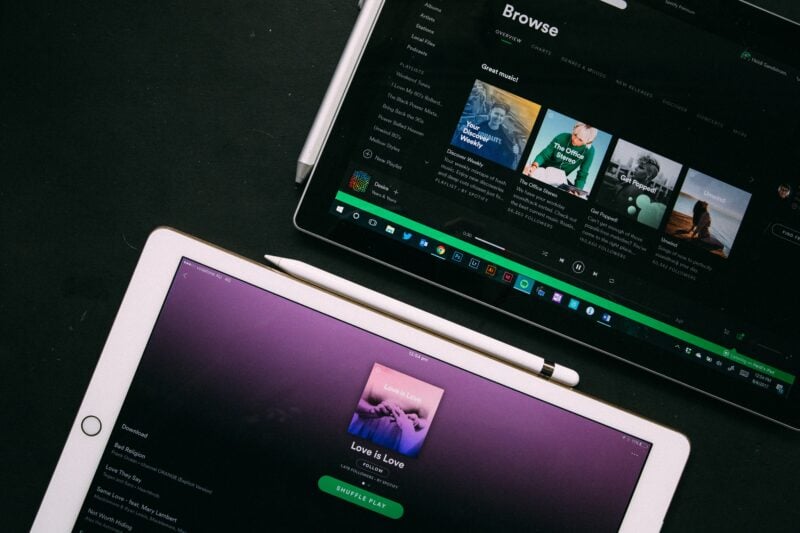In the vast and ever-changing digital landscape of modern music, you are all confronted with a unique blend of challenges and opportunities when it comes to getting your music heard and finding your fanbase. On the one hand, the massive influx of music flooding digital platforms makes carving out a distinct space for your voice a daunting task. On the other hand, the digital revolution has opened up new avenues for reaching global audiences, expanding your influence and broadening your fan base in ways previously unimaginable. One such game-changing avenue is the ever-coveted PLAYLIST.
Playlists have become a pivotal part of the music streaming experience. The inclusion of your song on a playlist not only offers a direct channel to listeners but also dramatically extends your reach. But how do you navigate this competitive space and ensure your music gets featured on these influential playlists? This guide will take you through the process, step by step. After you read this guide, take your time to properly research each step and develop a plan that will work for you.
Step 1: Ensuring Distribution of Your Music
Before dreaming of that coveted playlist spot, the initial requirement is to have your music readily available on the platforms where these playlists exist. Major streaming platforms like Spotify, Apple Music, Youtube Music and Tidal should be your prime targets.
Consider utilizing music distribution services like DistroKid, TuneCore, or CD Baby. These platforms function as the bridge between you, the artist, and the streaming platforms. They handle the distribution of your music across multiple platforms, ensuring your tracks are accessible wherever your potential fans might be tuning in. Of course, you also need make sure your music is loud enough for streaming services before you upload for distribution.
Step 2: Acquainting Yourself with Different Types of Playlists
Playlists can generally be categorized into three types:
Editorial Playlists: These playlists are curated by the in-house teams of the streaming platforms themselves. For example, Spotify’s editorial team handpicks tracks for their playlists based on various themes, moods, genres, and more.
Algorithmic Playlists: These playlists are generated by the platform’s underlying algorithms. They’re customized for each listener, based on their listening habits, preferences, and behaviors. A prime example of this is Spotify’s ‘Discover Weekly’.
User-Generated Playlists: These playlists are created by users of the platform. These users could be individuals sharing their favorite tracks or influencers and bloggers who have a significant following.
Understanding these different types of playlists is essential because your approach towards each will vary.
Step 3: Pitching to Editorial Playlists
Many streaming platforms, such as Spotify, offer a direct line of communication for artists to pitch their unreleased songs to their editorial team. This opportunity is available via the Spotify for Artists platform. Remember, it’s crucial to submit your track at least 2 weeks ahead of your release date. This gives the editorial team ample time to review your submission.
When pitching your song, don’t shy away from providing details. Describe the track, its story, its genre, and why it would resonate with listeners. Make a compelling case for why your song deserves to be featured.
On Apple Music, a similar opportunity is available through the Apple Music for Artists program, where artists can submit their music for editorial consideration.
Step 4: Engaging with Curators of User-Generated Playlists
User-generated playlists offer an often untapped opportunity. Seek out individuals, influencers, or bloggers who curate popular playlists that align with your genre. Craft a polite, concise message presenting your music and explaining why it would be a valuable addition to their playlist.
Remember, demonstrating familiarity with their playlist and its theme shows respect for their work and increases the chances of your music being considered.
Step 5: Navigating Algorithmic Playlists
Algorithmic playlists rely heavily on data. The more your music is played, saved, liked, shared, and added to personal playlists, the higher the likelihood of it being picked up by these algorithms. So, it’s essential to have a strategy in place to increase these interactions.
Engage with your fans constantly on social media. Encourage them to not only stream your music but also to interact with it. Have them add your songs to their playlists, share it with their friends, and post about it. These digital interactions go a long way in influencing algorithmic playlist placement. You can also set up a “Pre-Save” campaign.
Step 6: Consistency and Engagement – The Road to Long-Term Success
Success in the playlist realm is rarely an overnight phenomenon. It requires persistence, high-quality music, and regular engagement with your fanbase. Consistently releasing music that resonates with your listeners is key. Remember, the more your music is out there, the better the chance you have of being noticed by both human curators and algorithms.
Consistency is key. The #1 failure of the modern business (and yes you are a business) is having a good plan but giving up too early. It can feel frustrating and scary not to see results from hard work, but stay the course. Remember a penny multiplied for 30 days is $5,368,709.12! But at day 15 it’s only a little over $163 and doesn’t cross over a million dollars until day 28! The process of building your musical empire will take years, the people who are successful are the ones who do productive things consistently every day and don’t give up on their goals.
Step 7: Utilizing Playlist Placement Services
While organic growth should be your primary focus, there are also services available that can help you submit your music to multiple playlist curators simultaneously. These services can help you save time and increase your chances of being noticed. However, it’s important to research each service thoroughly, as some may be more reputable and effective than others. I have personally never found much success with these, but I know some people who have, so do your homework.
Step 8: Understanding and Monitoring Your Data
Once you have your music on playlists, it’s important to monitor how it’s performing. This can give you insight into which types of songs do well on playlists, which platforms yield the most success, and how listeners are discovering your music. Use the data provided by your streaming platform and your distributor to understand and improve your strategy.
Step 9: Expanding Your Reach Beyond Playlists
While getting your music on playlists should be a part of your strategy, don’t limit yourself to this single avenue. There are many ways to reach new listeners, such as performing live, releasing music videos, collaborating with other artists, and engaging in music promotion campaigns. By diversifying your approach, you’ll have a better chance of reaching more listeners and growing your fanbase.
In conclusion, while being featured on a playlist can provide a significant boost to your music career, it’s just one piece of the puzzle. Focus on creating compelling music, building your fanbase, improving as an artist, and leveraging playlists as a part of your broader strategy. The world of music is a vast ocean, and playlists are one of the many vessels that can help you navigate towards success. Stay consistent, stay engaged, and above all, keep creating music that resonates with you. Your journey in music is uniquely yours, and every playlist feature is a testament to your progress.
Do This Before You Publish On Spotify…
It’s important to make sure your track is mastered properly before you upload to Spotify. Otherwise, it might sound out of place and amateur.
As the artist, you know the vision for your music – which is why it’s best to master your music yourself. Visit our home page to learn more about becoming a professionally-trained mastering engineer.










